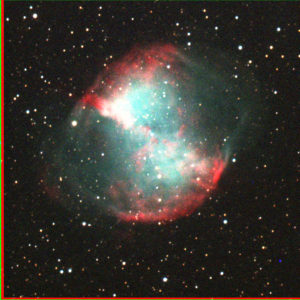The Traveling University
 The Traveling University is network of academics and students at Ethiopian Higher Education institutions, that provides a platform for Ethiopian academics to collaborate in short and long term educational activities within the universities, junior colleges and schools.
The Traveling University is network of academics and students at Ethiopian Higher Education institutions, that provides a platform for Ethiopian academics to collaborate in short and long term educational activities within the universities, junior colleges and schools.
Mission Academics/Partners/Project/ Library/Faculty/Student
More modules click on here :EEWB Courses and Workshops
Module 1: Computational Science and Engineering
This filed shapes technology and provides the opportunity the deeper understanding of natural phenomenon that can be inaccessible to experimental investigation or when experimental investigation is financially prohibitive. Computational models and simulation with the help of high performance compute can now solve complex problems in physical and mathematical science, Economics and Finance, Climate Change, life sciences and engineering. There is need to develop research competences in this field to provides students and researchers skills in high performance computing, numerical mathematics, multi-scale and multi-physics modeling, Computational Fluid Dynamics, Atmospheric Science,Climate Modeling, Seismology, Reservoir Modeling, Structural analysis,Materials, Particle Physics, Astrophysics, Quantum Computing, GeneralRelativity, Cosmology, Biophysics, Chemistry, Biology, Medical Imaging,Economics, Finance, Nonlinear Dynamics, Numerical Analysis, Parallel Computing etc
Module 2: Biomedical and Bioinformatics Training
The Biomedical and Bioinformatics Training consists of 12teaching modules in biomedical and health sciences. These modules will be integrated into existing undergraduate and graduate courses through team teaching, seminars, lectures, workshops, symposia and research. The overall outcome of this exercise is to develop a model program that trains interdisciplinary research workforce for biomedical and health sectors. The plan includes the design and implementation of 12 Biomedical and Health Modules that use existing capabilities on and off campus. The Interdisciplinary science fields include subjects such as Biophysics, biometry, bioengineering, biomaterials, cognitive neuroscience, bioelectricity and biomagnetism. The modules will be customized to train graduate and undergraduate STEM majors as well as STEM. The trainees will be required to join research groups within the university research centers. The modules will be customized to enhance our capability to respond to the interdisciplinary workforce needs of the country. The modules will support and enhance a number of courses in Physics, Industrial Engineering, Mechanical Engineering,biology, chemistry, mathematics and nursing, at undergraduate and graduate level. These modules will allow the trainees to gain a total learning experience that will involve literature search, ethics, data acquisition and reporting.
Module 3: Physics Education and Research
The primary goals of instruction in a given physics course are to make students functional and experts in the course. In order to determine the effectiveness of instruction students are subjected to an assortment of assessment including tests and homework. Unfortunately, these assessment tools are circumstantial and dependent upon the environment under which the instruction is conducted. What is then the measure of student learning in physics? How do we measure their conceptual understanding of physics and their abilities to apply these concepts to a physics problem? Physics education researchers developed assessment tools to measure student learning. One instrument used to evaluate the introductory mechanics course is the Force and Motion Conceptual Evaluation(FMCE). In this project, the FMCE will be used to evaluate students’l earning during the first semester of introductory physics first at University of Gondar and then expand it to 30 state universities in Ethiopia. The traditional instruction in EthiopianUniversities will be evaluated using assessments developed by physics education research in the United States. Since Ethiopian students have had much more physics than American students, performance on the assessments will be revealing of the effectiveness of the traditional physics instruction in Ethiopia. The expansion of the research to other universities and high schools will be initiated during Gondar School of Science and Technology (GSST). During GSST a session on STEM EducationResearch focusing on Physics will be added. As in the past several hundred school teachers and university professors will participate allowing a broader dissemination of the results of PhysicsEducation Research.
Module 4: High School Student and Teacher Development
We conduct Science,Technology and Space Institute to advance the frontiers of knowledge through engagement of the K12 communities and the university with activities that track and target National Education Standard of Ethiopia. In so doing the activities will enhance the student interest in Science Technology, Engineering and Mathematics (STEM)fields and the enhance the teaching skills of teachers. Students and teachers will work collaboratively as team members, will learn and apply their computational skill, will learn the core concepts of space science, will learn to integrate science, mathematics, technology, and geography concepts, will learn to communicate more clearly and effectively. In the end these teams will shape then ext generation of space scientists by working closely with the best minds in the field. The most important component of the education plan will be the advising process. The teams of advisors include a university faculty member, the student’s teacher (s), and space science experts. All the elements of peer advising and role model will be implemented. Of particular importance in this process is the establishment of the annual STEM Olympiad where we conduct competition among high school students.
